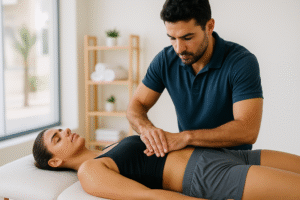
Myofascial Release Guide: Relieve Pain & Restore Mobility
Discover doctor-led myofascial release that targets fascia, eases chronic pain, and boosts flexibility. Personalized manual therapy restores natural movement.
As the Medical Director at Physio Cure, I’ve guided countless athletes through the aftermath of that dreaded "pop." I remember a young footballer, crestfallen, believing his career was over after an ACL tear during a pivotal match. The fear in his eyes is something I see often, a potent mix of pain, uncertainty, and the dread of losing a part of his identity. But what I also have the privilege to see, months later, is the triumph of his return to the pitch, not just healed, but stronger, smarter, and more confident than before. This journey from injury to victory isn't about luck or some magic fix; it's about a dedicated, intelligent, and deeply personalized approach to healing. An effective ACL Injury Recovery is a meticulously planned process, a true partnership between your commitment and our clinical expertise. It’s about rebuilding not just a ligament, but your entire confidence in your body's ability to perform at its peak.
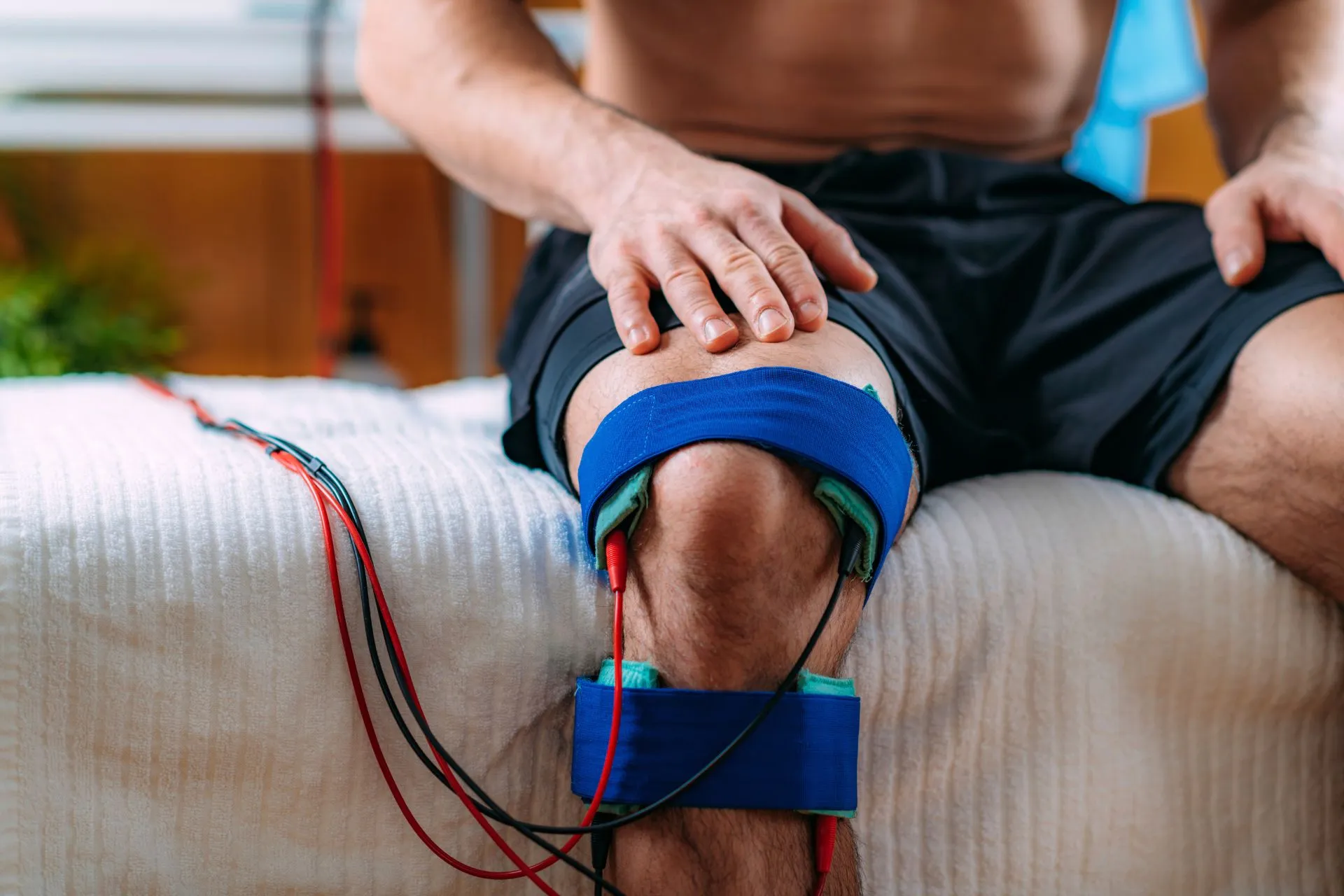
So, what actually happened inside your knee? The Anterior Cruciate Ligament (ACL) is a crucial stabilizer, a tough band of tissue that prevents your shin bone (tibia) from sliding too far forward on your thigh bone (femur). It's the linchpin for stability during cutting, pivoting, and decelerating. Most ACL tears are non-contact injuries, occurring from a sudden, awkward movement. Think of a footballer planting a foot to change direction, or a basketball player landing off-balance from a jump. The force is simply too great for the ligament to withstand.
Whether you undergo surgery—an ACL Reconstruction Rehabilitation—or opt for a non-surgical path, the goal of your ACL physical therapy is the same: to restore rock-solid stability, symmetrical strength, and flawless function. This isn't just about healing the ligament; it's a much bigger picture. We must re-train the entire kinetic chain—the intricate network of muscles and joints from your hip down to your ankle—to work in perfect harmony and create a protective fortress around the knee. This foundational work, focusing on the root cause, is a core principle of our orthopedic physiotherapy approach.
One of the first questions every athlete asks is, "How long until I can play again?" While the competitor in you wants to hear "a few weeks," the doctor in me must stress the importance of a structured, criterion-based timeline. Rushing back is the number one risk factor for a re-tear. A comprehensive ACL recovery timeline typically spans 9 to 12 months, and sometimes longer. We don't progress based on the calendar; we progress based on you meeting specific, objective milestones. Think of it as a video game—you can't unlock the next level until you've mastered the current one. Our entire ACL rehab program is built on this principle of earning your progression.
Immediately after injury or surgery, our focus is singular: create the optimal environment for healing. This means aggressively managing swelling and pain, regaining full knee extension (getting it perfectly straight), and gently re-awakening your sleeping quadriceps muscle. It's a common misconception that you should do nothing. In fact, early, controlled motion is vital for preventing stiffness and promoting nutrient flow to the joint.
Patience is not simply waiting; it's the active acceptance that some things take time. Your ACL recovery is a marathon, not a sprint. This initial phase sets the stage for everything to come. Respect it.
Once the initial healing is underway, we shift gears to rebuilding. Here, we aim to normalize your walking pattern and begin a progressive strengthening program. We introduce functional movements like squats and lunges, but in a safe, controlled manner, always prioritizing perfect form. Balance training (proprioception) also begins in earnest, as your brain needs to relearn how to trust and control the knee's position in space.
This is where things get exciting. We've built the foundation, and now we start adding layers of complexity, speed, and load. The key here is neuromuscular control—teaching your muscles to fire at the right time with the right force. We'll introduce a structured running program, basic jumping (plyometrics), and agility drills. Every single movement is scrutinized. This is where expert, hands-on physical therapy is non-negotiable to correct faulty movement patterns before they become ingrained, risky habits.
The final phase is all about bridging the gap between the controlled environment of the clinic and the chaotic, unpredictable environment of your sport. The exercises become increasingly complex and sport-specific. Before you are cleared for full, unrestricted competition, we perform a battery of objective, evidence-based return-to-sport tests. We need to see that your strength, power, and stability are at least 90-95% of your uninjured side. This data-driven approach removes the guesswork and ensures you're truly ready.
While the core of any great ACL rehab program is progressive exercise, at a doctor-led clinic, we integrate advanced therapeutic modalities to optimize your recovery. These aren't magic wands, but sophisticated tools that, when applied correctly, can manage pain, improve muscle function, and accelerate healing. Here's a look inside our toolkit:
The physical recovery is only half the battle. The psychological journey can be just as, if not more, challenging. Fear of re-injury, or kinesiophobia, is a huge barrier; you might find yourself hesitant to plant your foot, guard movements, or move with the same freedom as before. It’s normal to feel frustrated by the slow pace of recovery or isolated from your teammates. Acknowledging these feelings is the first step. A comprehensive ACL physical therapy program must address this head-on.
We build your mental resilience with specific strategies:
Listen to your body, but also trust the plan. The milestones are there for a reason—to ensure your new ACL is ready for the demands you'll place on it. Pushing through sharp pain is not toughness; it's a setback waiting to happen. Communication with your therapist is key.
Theory is one thing, but seeing it in practice is another. Let me share two stories that illustrate how we tailor the ACL rehab program to the individual.
Aisha tore her ACL during a box jump workout. Her biggest fear was losing the strength she'd worked so hard for and never being able to perform an overhead squat again. Her rehab focused heavily on maintaining upper body and core strength from day one. In the later phases, we didn't just do standard plyometrics; we specifically analyzed the biomechanics of her box jump. We used video feedback to correct her landing pattern, ensuring her knees tracked correctly and she absorbed force through her hips. For her overhead squat, we used biofeedback to ensure her glutes were firing properly to stabilize her pelvis, taking stress off the knee. Aisha returned to her CrossFit box not just healed, but with a technically superior and safer squat than before her injury.
Karim's injury happened during a non-contact pivot. His challenge was purely psychological. He had the physical strength, but he was terrified of planting his foot and cutting. His late-stage rehab was less about the gym and more about on-field simulation. We started with pre-planned agility drills. Then, we moved to reactive drills, where I would point which way he had to cut at the last second. We used a harness system to give him the confidence to lean into his cuts without fear of falling. His "graduation test" was a one-on-one session against another physio, forcing him to react and defend in a live, but controlled, scenario. He regained not just his physical agility, but the mental freedom to play without hesitation.
You can't build a house without bricks, and you can't rebuild a ligament without the right nutrients. Your diet plays a massive role in the speed and quality of your recovery. We emphasize:
The journey of an ACL injury recovery is a testament to an athlete's resilience. It requires patience, diligence, and trust in a process that has been refined by science and experience. Every check-in, every exercise, and every milestone passed is a deliberate step back towards the sport you love. You provide the commitment, and a skilled, doctor-led physiotherapy team provides the roadmap. Together, we can turn a moment of crisis into a story of a remarkable comeback, building you back stronger than you were before.
Ready to take the first step towards a full and confident recovery? Explore our dedicated Sports Injury Rehabilitation program and let's build your comeback story together.

Discover doctor-led myofascial release that targets fascia, eases chronic pain, and boosts flexibility. Personalized manual therapy restores natural movement.
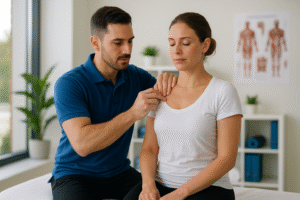
Learn how doctor-led trigger point therapy at Dubai’s leading clinic conquers chronic muscle knots, boosts mobility, and delivers lasting, root-cause pain relief.
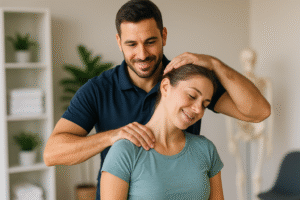
Discover how joint manipulation targets pain at its source, boosts mobility, and speeds recovery. Explore doctor-led physiotherapy for lasting relief.
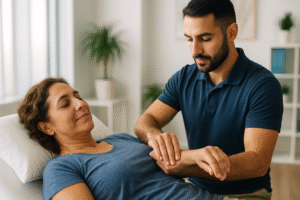
Discover doctor-led soft tissue mobilization that targets pain, breaks scar tissue, and restores full movement. Book evidence-based physiotherapy in Dubai.
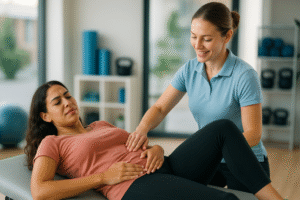
Endometriosis pain doesn’t have to rule your life. Physiotherapy targets root causes, releases pelvic tension, and restores comfort. Book a consult today.
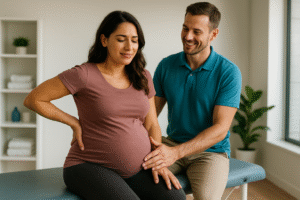
Discover doctor-led physiotherapy for pregnancy lower back pain relief. Gain root diagnosis, customized exercises, and guidance for a pain-free journey.
Physio Cure Dubai, located in Dubai Silicon Oasis, offers a comprehensive range of physical therapy services. Our team of the best physiotherapists in Dubai are all real doctors providing personalized care, using the latest technologies and evidence-based techniques to help you, your child, and your loved ones recover and live a pain-free life.
DHA License No. 5411940
1510, SIT Tower, Dubai Silicon Oasis